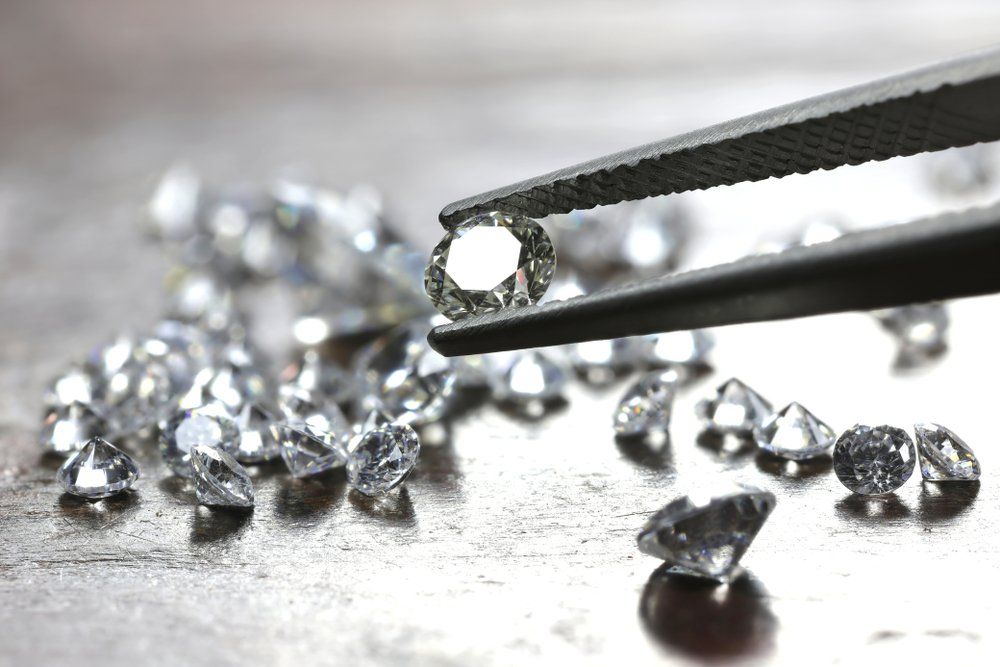Nature leaves one aspect of diamond beauty entirely in the hands of man: cutting. By following certain principles of shaping, faceting and polishing evolved over the centuries, the cutter unleashes the diamond's peerless ability to reflect and refract light. When this happens, the diamond has no rival for brilliance, fire and scintillation. To idealize the diamond's full prowess with light, the cutter must sacrifice more weight from the rough, and take far more time at the wheel, than is necessary with a conventionally cut diamond. Sad to say, most diamonds are cut for weight, not beauty. Sadder still, the compromise of beauty is something you might never notice if your jeweler doesn't stock finely fashioned diamonds, such as our signature diamonds. But place a superbly crafted diamond next to a conventionally crafted one and you will see an immediate difference. The better cut diamond will look more lively.
Until recently diamonds were graded only for color and clarity. No lab actually gave an over-all grade for the cut of a diamond comparable to a color or clarity grade. All of that changed in 1996 when the American Gem Society opened a gem lab and introduced what it calls the diamond quality document. Using its 0 to 10 grading system (with 0 the top grade), AGS grades a round-brilliant diamond individually for three important aspects of cutting:
Proportions – the angles of a diamond and the interrelationship between them,
Symmetry – the exactness of shape and placement of facets.
Polish – the final finish of the surface of the diamond.
When a stone meets the society's highest criteria for any of these three aspects of cutting, it receives a zero (0) grade. When diamonds are given zero grades for proportions, symmetry and finish respectively, they earn a coveted triple zero grade. This is the standard for the American Gem Society Ideal cut diamond.
Currently, several laboratories are adding a cut grade classification of "ideal" to their reports. Some use the term "Tolkowski Ideal." These labs use somewhat different standards for their "ideal" classification than the American Gem Society Lab, which maintains the highest standards of any of these labs. In order to truly compare diamonds one must use a consistent standard. There will be vast differences in price, marketability, and appearance for "ideal" diamonds from different labs.
It is important to note that when these labs grade cut, including the American Gem Society Lab, they remain limited in their scope. This is why two diamonds may have the same "triple zero" grade, but appear very different visually and have differences in price which would be otherwise unexplainable. For example, when a lab grades proportions, they take an average of all the angles, not an actual measurement; a cutter may "over cut" one facet and can still make up by "undercutting" another and thus remain within "ideal" parameters. The two together may average to the preferred angle, yet they can each be far outside the ideal range. A diamond cut in this manner may still attain a triple zero grade. Additionally, when grading symmetry, labs only look at 17 facets of the 58 facets. 41 facets are not even considered by grading labs, including the American Gem Society Lab. These limitations to grading cut make it impossible to compare diamonds without actually seeing them side by side. The internet abounds with "bargain" ideal cut diamonds; hopefully the reader can now have a better understanding why there are such differences in price.

